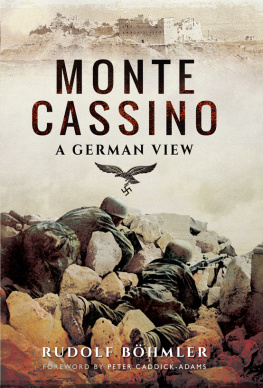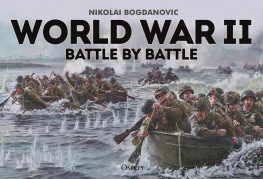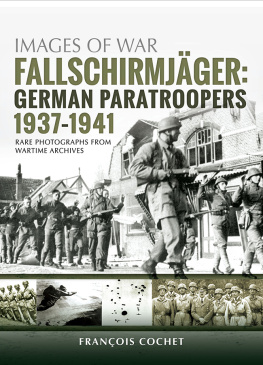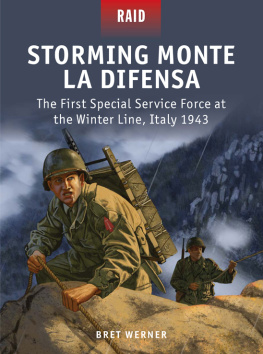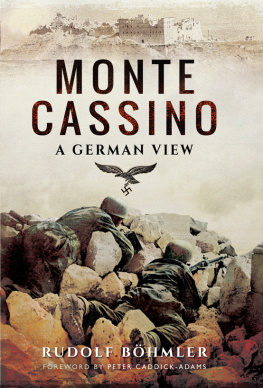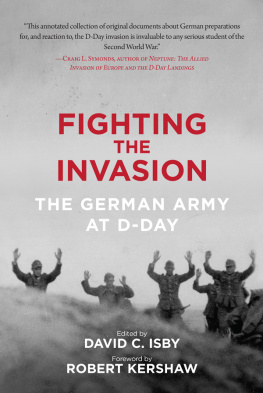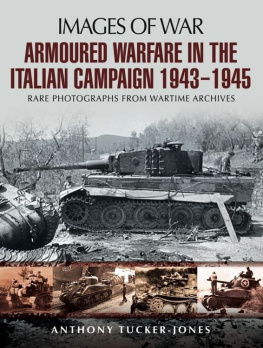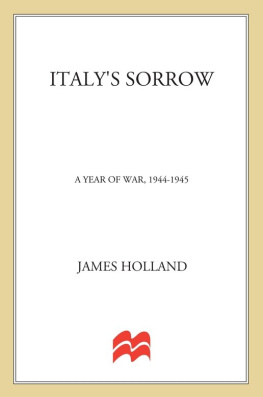Monte Cassino
A German View
Rudolf Bhmler
Translated by R.H. Stevens
Foreword by Peter Caddick-Adams

Pen & Sword
MILITARY
First published in German in 1956 by Maximilian Verlag GmbH & Co
English translation first published in 1964
This edition published in Great Britain in 2015 by
Pen & Sword Military
an imprint of
Pen & Sword Books Ltd
47 Church Street
Barnsley
South Yorkshire
S70 2AS
Copyright Maximilian Verlag GmbH & Co.
KG/E.S. Mittler & Sohn, 1956
Copyright foreword Peter Caddick-Adams
ISBN 978 1 47386 431 3
The right of Rudolf Bhmler to be identified as the Author of this
Work has been asserted by him in accordance with the Copyright,
Designs and Patents Act 1988.
A CIP catalogue record for this book is available from the British
Library
All rights reserved. No part of this book may be reproduced or
transmitted in any form or by any means, electronic or mechanical
including photocopying, recording or by any information storage and
retrieval system, without permission from the Publisher in writing.
Typeset in Ehrhardt by
Mac Style Ltd, Bridlington, East Yorkshire
Printed and bound in the UK by CPI Group (UK) Ltd,
Croydon, CRO 4YY
Pen & Sword Books Ltd incorporates the imprints of Pen & Sword
Archaeology, Atlas, Aviation, Battleground, Discovery, Family
History, History, Maritime, Military, Naval, Politics, Railways, Select,
Transport, True Crime, and Fiction, Frontline Books, Leo Cooper,
Praetorian Press, Seaforth Publishing and Wharncliffe.
For a complete list of Pen & Sword titles please contact
PEN & SWORD BOOKS LIMITED
47 Church Street, Barnsley, South Yorkshire, S70 2AS, England
E-mail: enquiries@pen-and-sword.co.uk
Website: www.pen-and-sword.co.uk
Contents
Maps
Foreword
As the sun glints down at me, reflected from the snow still clinging to the peaks around Monte Cassino, I am very happy to introduce this new edition of Rudolf Bhmlers account of the fighting here in 1944. Although published in German in 1956, it first appeared in English only in 1964 and immediately caused a stir as one of the most vivid accounts of the Second World War written from a German standpoint. There are relatively few German soldiers voices of the fighting in Italy, and almost none translated into English. Accordingly, my well-thumbed, 50-year-old copy of Bhmler is fast disintegrating and a replacement edition has been long overdue. This volume is something of a rarity and its reappearance is an important reminder of the effectiveness of German fighting methods, excellent low-level leadership, to which Bhmler adds a useful analysis of Allied military strategy in that campaign. It is a reliable, objective account penned by a battalion commander, who had a somewhat wider perspective of the battles in which he fought than those who served under him. Although his book is actually a wider history of the Italian campaign, Bhmler really comes into his own when describing the battles at Cassino, where he led his battalion, and for which he was awarded the Knights Cross on 26 March 1944.
Rudolf Bhmler was born in Weilimdorf, a suburb of Stuttgart, on 12 June 1914 just days the fatal shots which ushered Europe into the First World War. Aged 20, he joined the army in 1933 and served as a leutnant in Infantry Regiment 55. He was one of the very first Fallschirmjger volunteers, transferring to the Luftwaffe in 1939. Even before the massive deployment of paratroops to Crete in May 1941, Bohmler had served in Poland and Holland, winning both classes of Iron Cross. For his leadership on the Russian Front in 1942, he was awarded the German Cross in Gold on 3 April and was promoted to Major in 1943; by this time he had already been wounded twice.
Bhmlers unit was the I Battalion of the 3rd Fallschirmjger (Parachute) Regiment, commanded by Oberst Ludwig Heilmann. Both men knew each other well, having served together as Fallschirmjger commanders since jumping into Crete (May 1941), then serving on the Eastern Front until redeployed to counter the Allied invasion of Sicily (Operation Husky, July-August 1943). That December, they fought a very effective delaying action against Canadian troops in the region of Ortona, on the Italian Adriatic coast, before arriving at Cassino. The Fallschirmjger were thus already veterans of several campaigns and regarded as an elite fire brigade, to be rushed to areas where the fighting was most dangerous and enemy break-ins anticipated. Armed with a high proportion of automatic weapons and grenades, but weak in artillery and transport (which couldnt be dropped into battle), German parachute forces were trained to anticipate chaos, be prepared to find themselves behind enemy lines, and always to understand their mission, and take offensive action in support of it without orders, if need be. This gave them the edge over other Wehrmacht units, and a reputation for getting things done quickly, though with an excessively high casualty rate.
Heilmanns regiment was one of three regiments in Generalleutnant Richard Heidrichs First Fallschirmjger Division, which took over the Cassino sector in late February 1944. Bhmler gives us a handy Order of Battle of the division as at 26 February. With other divisions whose activities Bhmler also recounts they formed part of XIV Panzer Corps, led by General der Panzertruppen Fridolin von Senger und Etterlin. The latter general wrote his own memoirs, including an account of the Cassino fighting, published in German as Krieg in Europa in 1960 and in English as Neither Fear Nor Hope in 1963. Read together, Senger and Bhmler remind the student of World War Two that it was still the bitter fighting of 191418 that haunted the collective memory of Europes warriors. Senger had served in that earlier war, which claimed the life of his brother; whilst at the beginning of his chapter on The Defenders of Town and Abbey, Bhmler reminds his readers As their fathers had stood up to the fury of Verdun and the battles of the Somme a quarter of a century before, their sons now stood fast in the face of the terrifying material onslaught with which the enemy was destined to destroy them.
Bhmlers opponent, the New Zealander Corps commander General Sir Bernard Freyberg, was also a prisoner of his Great War experiences where he won three DSOs and a Victoria Cross but lost two of his brothers and haunted by the utter devastation of Passchendaele. Once Freyberg discovered the Fallschirmjger were in possession of Cassino the very same troops who had trounced him out of Crete in 1941 the adoptive New Zealander (he was a Briton by birth) seems to have surrendered to a sense of retribution, which resulted in exactly the same kind of destruction that he and Senger had witnessed in the First World War. Instead of the awesome quantities of artillery used in 1916 at Verdun and the Somme, to which Bhmler was referring, Freyberg requested its 1944 equivalent the application of airpower on a massive scale which reduced town and abbey to rubble and dust.
Under the ruins lay Bhmler and the remnants of his battalion. It was a picture as gruesome as any that the fields of Flanders had had to offer in the First World War, he wrote. His chapter on the Second Battle of Cassino describes the bombing of the town on 15 March, as seen through his own eyes and those of his men: Tensely we waited in our holes for the bombs to drop. Then they came. The whining scream of their approach, the roar of their explosions, and the noise of the aircraft themselves mingled with echoes flung back from the hills to produce and indescribable and infernal bedlam of noise. The whole earth quaked and shuddered under the impact. Then a sudden silence.

